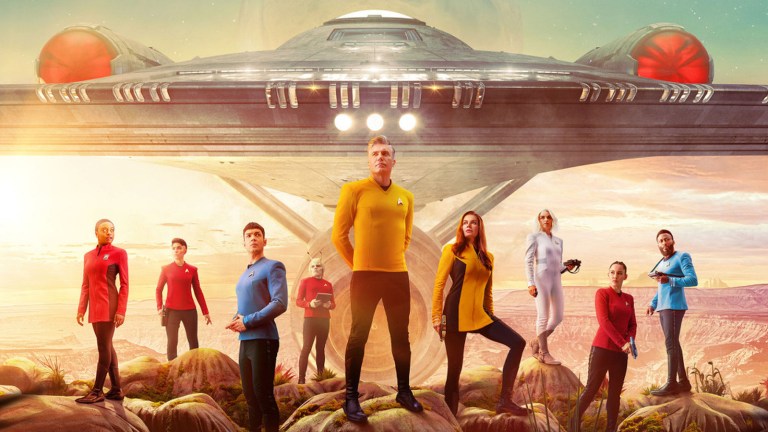Star Trek Showrunner Defends Major Canon Change
Star Trek: Strange New Worlds may have majorly updated the franchise's timeline, but co-showrunner Akiva Goldsman says it's all a part of keeping the hope in Star Trek.

This post contains spoilers for Star Trek: Strange New Worlds.
Star Trek has always been set in an optimistic future, but its vision of our present has been anything but hopeful. The series has long connected its better tomorrow to a bleak today, one marked by the devastation of World War III and the massive inequality that led to the Bell Riots.
One of the most important markers of the Trek timeline has been the Eugenics Wars, the massive conflict that led to the Federation outlawing augments and chasing Khan Noonien Singh away on the SS Botany Bay. In the classic Original Series episode “Space Seed,” Spock dates the Eugenics Wars as beginning in 1992, something that the rest of the franchise followed. That is until the Strange New Worlds episode “Tomorrow and Tomorrow and Tomorrow,” where Kirk and La’an visit the 21st century and encounter a young Khan, still yet to wage the Eugenics Wars.
Within the episode, Romulan agent Sera blames the discrepancy on the Temporal Cold War, as depicted in Star Trek: Enterprise. But according to co-showrunner Akiva Goldsman, the shift has more terrestrial origins.
“This is a correction,” Goldsman told CinemaBlend. “Because otherwise, it’s silly, or Star Trek ceases to be in our universe.” Indeed, that’s always been the struggle for Star Trek after it continued past its original three-season run at the end of the 60s. When “Space Seed” aired in 1967, the beginning of the Eugenics Wars was still 25 years away. But it’s now 2023 and obviously our real-life history has played out a bit differently than the one imagined by Gene Roddenberry and his writers.
Thus, post-Original Series shows have had to make choices at times about to how to handle the ways Star Trek resembles or diverges from our own history. At times, the shows have either ignored the events of our past, but they’ve also ignored their own canon as established in TOS, as with Voyager two-parter “Future’s End,” which saw the crew arrive in a 1996 that seemed untouched by war. According to Goldsman, Trek creators will have to continue making decisions about what to retcon so that this franchise about a utopian Earth society from the future can continue to comment on our present.
“We want Star Trek to be an aspirational future,” explained Goldsman. “We want to be able to dream our way into the Federation as a Starfleet. I think that is the fun of it, in part. And so, in order to keep Star Trek in our timeline, we continue to push dates forward. At a certain point, we won’t be able to. But obviously, if you start saying that the Eugenics Wars were in the ’90s, you’re kind of fucked for aspirational in terms of the real world.”
Goldsman also points out that the series already hinted at changes in the timeline during season one, as the pilot episode (written and directed by Goldsman) includes footage of the attempted coup on Jan. 6, 2021. But with “Tomorrow and Tomorrow and Tomorrow” makes explicit what has only been implied by other series.
This change will give writers some latitude as they continue working on the show, at least until they need to update the timeline again in another 100 years.
Star Trek: Strange New Worlds season 2 is streaming now on Paramount+.
